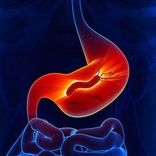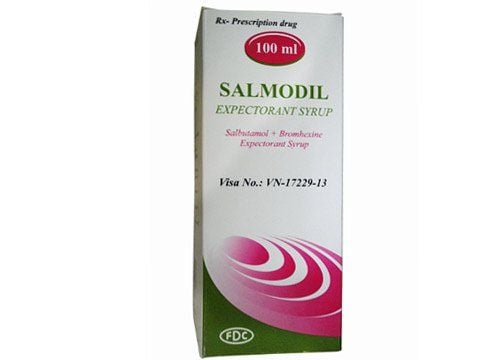Fluidasa belongs to the group of drugs that act on the respiratory tract, prepared in the form of granules mixed with oral solution. The main ingredient of Fluidasa is acetylcysteine, which is indicated in the treatment of respiratory secretion disorders. However, during treatment, side effects such as nausea and vomiting, stomach pain, diarrhea, etc. may occur. Therefore, patients need to carefully study the information on Fluidasa before using it.
1. What is the effects of Fluidasa?
The main ingredient of the drug is Acetylcysteine, which helps regulate mucus by dissolving phlegm and only acts on the gel segment of mucus by breaking the disulfide bonds of glycoproteins. In addition, this compound also facilitates the expulsion of phlegm by coughing postural drainage or mechanical methods.
Fluidasa, after entering the body, can be quickly absorbed in the digestive tract and deacetylated into cysteine by the liver, which is then metabolized. Peak plasma concentrations of Fluidasa are approximately 0.5 to 1 hour after oral doses of 200 to 600 mg. The bioavailability of Fluidasa after use may be low and is metabolized in the intestinal wall and then to the liver. The clearance of Fluidasa may account for approximately 30% of total body clearance.
2. Indications and contraindications for using Fluidasa
Fluidasa is used in the treatment of respiratory, bronchial, and sinus secretion disorders, especially in acute bronchial diseases, acute bronchitis, and the acute phase of chronic bronchopulmonary disease.
Fluidasa is contraindicated in cases of hypersensitivity to the ingredients of Fluidasa or people with hereditary phenylketonuria, children under 24 months, or people with a history of asthma.
3. Dosage and administration of Fluidasa
Fluidasa is used orally and each age will have a different dosage. For adults and children over 7 years old, it is recommended to use the drug with a dose of 1 packet/time and 3 times a day. For children from 2 to 7 years old, use 1 packet/time and 2 times a day.
Note: The treatment dose with Fluidasa as recommended above is for reference only. Therefore, before using Fluidasa, patients need to follow the doctor's instructions.
4. Handling missed doses and overdoses of Fluidasa
If you forget to take a dose of Fluidasa, use it as soon as you remember. However, if the interval between the missed dose of Fluidasa and the next dose is too close, skip the missed dose. Patients should not double the dose of Fluidasa, as this may cause an overdose. To overcome the situation of missing a dose of Fluidasa, patients can set an alarm or ask a relative to remind them.
In case of accidentally using an overdose of Fluidasa and experiencing some unwanted symptoms, a relative should take you to the emergency room immediately.
5. Side effects when using Fluidasa
Fluidasa can cause some unwanted side effects during treatment. However, in each case, the side effects of Fluidasa can occur at different levels from mild to severe.
Some common side effects caused by Fluidasa include: Abdominal pain, diarrhea, constipation, and stomach pain. These side effects can occur at the beginning of treatment or after increasing the dose of Fluidasa. Usually, side effects caused by Fluidasa can be transient or decrease over time.
However, in some cases, Fluidasa can cause serious unwanted side effects with rare reactions. These reactions can appear within a few minutes of using Fluidasa or longer within a few days. When serious side effects such as severe allergic reactions, rash, difficulty swallowing, difficulty breathing, swelling of the lips, lips, face, throat, heavy bleeding, edema, rapid heartbeat, hives, hypotension, hypersensitivity, stomatitis, ... appear, the patient should stop using Fluidasa and go to a medical facility for immediate medical assistance.
Some notes during the use of Fluidasa:
• Pregnant and lactating women should be careful when using Fluidasa. Patients need to be advised by a doctor to use it, and carefully analyze the benefits and risks before using Fluidasa.
• Fluidasa can change the ability to function as well as increase the effects of side effects. Therefore, to avoid drug interactions with Fluidasa, patients should provide the doctor with a list of previously used medications, including prescription and non-prescription drugs, herbs, ...
• When using Fluidasa, pay attention to the manifestations of allergies to the drug. Patients need to report any adverse reactions to their doctor for timely treatment.
• Fluidasa can cause dizziness and headaches. Therefore, people who operate machinery or drive vehicles should be careful when using the drug to ensure safety.
• When using Fluidasa, caution should be exercised in patients with gastric or duodenal ulcers.
• Fluidasa contains lactose, patients with rare genetic diseases such as galactose intolerance, Lapp lactase deficiency, etc. should not use the drug.
The above is all the information about Fluidasa, patients need to read the instructions carefully and consult a doctor/pharmacist before using. Note, that Fluidasa is a prescription drug, so patients should not buy the drug to treat themselves at home because they may experience unwanted side effects.
To arrange an appointment, please call HOTLINE or make your reservation directly HERE. You may also download the MyVinmec app to schedule appointments faster and manage your reservations more conveniently.













